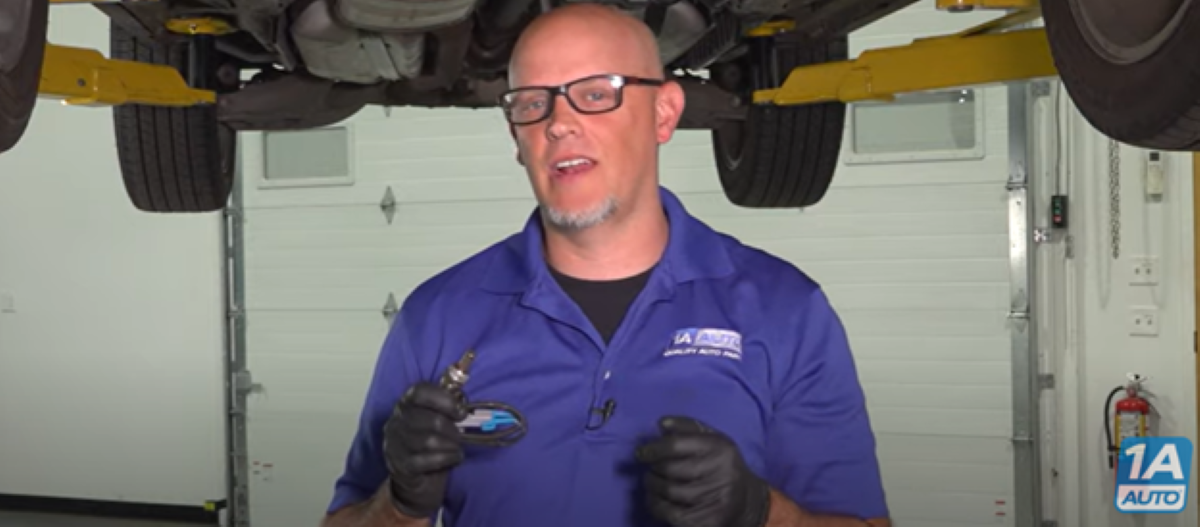Find out the symptoms of a bad oxygen (O2) sensor in your car and if it can cause poor gas mileage in this article and video.
Can Faulty O2 Sensors Drop Your Fuel Mileage?

It Depends on Which O2 Sensor Is Faulty
O2 Sensors Monitoring the Engine Can Cause Poor Gas Mileage
Most vehicles have four or two oxygen (O2) sensors. Half of those are monitoring the engine, and these are the O2 sensors that could affect fuel mileage.
O2 Sensors Monitoring the Catalytic Converter Won’t Cause Poor Gas Mileage
The O2 sensors in the rear are monitoring the catalytic converter, and they will not affect fuel mileage but monitor the catalytic converter so the computer knows it’s working.
How to Tell Which O2 Sensor(s) Monitors the Engine and Catalytic Converter
O2 Sensors Monitoring the Catalytic Converter Are Placed Behind It and Further Down the Exhaust
If you want to know which is O2 sensor is monitoring the catalytic converter and which is monitoring the engine, the sensor behind the catalytic converter or further down the exhaust is monitoring catalytic converter.
O2 Sensors Monitoring the Engine Are Placed Before the Catalytic Converter
The O2 sensors placed before the catalytic converter monitor the engine and affect fuel mileage. Exhaust gases exit the engine, and the O2 sensor measures the exhaust gas that travels down a pipe to the catalytic converter where it burns up wasted fuel and will then be monitored by second oxygen sensor.
You need an air and fuel mixture for your engine to run. To make it run efficiently for the best horsepower and fuel economy, it needs the air/fuel ratio to be 14.7 parts air and one part fuel. The O2 sensor monitors this, and if it notices a lack of gas by taking a high reading of oxygen, the computer will respond by adding more fuel. Then the O2 sensor will monitor the excess fuel, and the computer will readjust to to reach the ratio.
More on how to locate O2 sensors in your car or truck
Can I Test an O2 Sensor?
You can monitor how the O2 sensors are performing by graphing their function with an advanced scan tool. When the graph fluctuates, that’s a sign the computer is adjusting for the ratio for the best mixture.
Symptoms of a Bad Oxygen (O2) Sensor in Your Car
If your vehicle has a bad O2 sensor, you may find symptoms like a check engine light, but you may also find physical damage if you remove it.
Read more about the symptoms of a bad O2 sensor
Check Engine Light
If there’s a problem with an O2 sensor on your vehicle, you may find a check engine light for an O2 related-code. This means you’ll just need to determine which sensor is the issue. The O2 sensor can send a false reading to the computer, and this will affect fuel mileage and horsepower.
Carbon Build-Up
If you remove the O2 sensor, it may look fine visually, but this doesn’t mean there isn’t a problem with it. You may also find symptoms of physical damage, like carbon build-up, which means it needs to be replaced.
Swollen Cage
If you remove the O2 sensor, you may find its cage swollen, which is a sign the sensor is faulty and needs to be replaced.
White Build-Up
White chalky build-up on the O2 sensor usually means there’s an issue with the head gasket, or coolant burning in the intake and then burning on the O2 sensor.
What Can Damage the O2 Sensors in My Car?
Leaking Oil or Coolant
Excessive oil and coolant getting into the exhaust or combustion chamber can damage the O2 sensors. If the valve cover is leaking oil directly onto sensor and wiring, that can also damage it.
Leaking Silicone Spray
If silicone spray or lubricant on the intake seals leak into the intake, they’ll travel through the combustion chamber and damage the O2 sensors.
Wear and Tear
Like spark plugs, O2 sensor are a wear item and are expected to eventually fail. We recommend replacing them on vehicles with high mileage.
Other parts that can affect fuel mileage
How to Replace a Bad O2 Sensor Yourself
Follow the Step-by-Step Instructions in Our How-to Videos
To replace an O2 sensor, you’ll need an O2 sensor socket, or 7/8 or 22mm socket.
Replacing an O2 sensor can be as easy as changing the oil. Find the location of O2 sensor, disconnect the connector, loosen the O2 sensor with the socket, and then you can usually twist it by hand once it’s loose.
To replace the sensor, reverse the steps and torque the O2 sensor once it’s installed.
Learn how to replace O2 sensors and more with the instructions from our experienced mechanics in our how-to videos.


